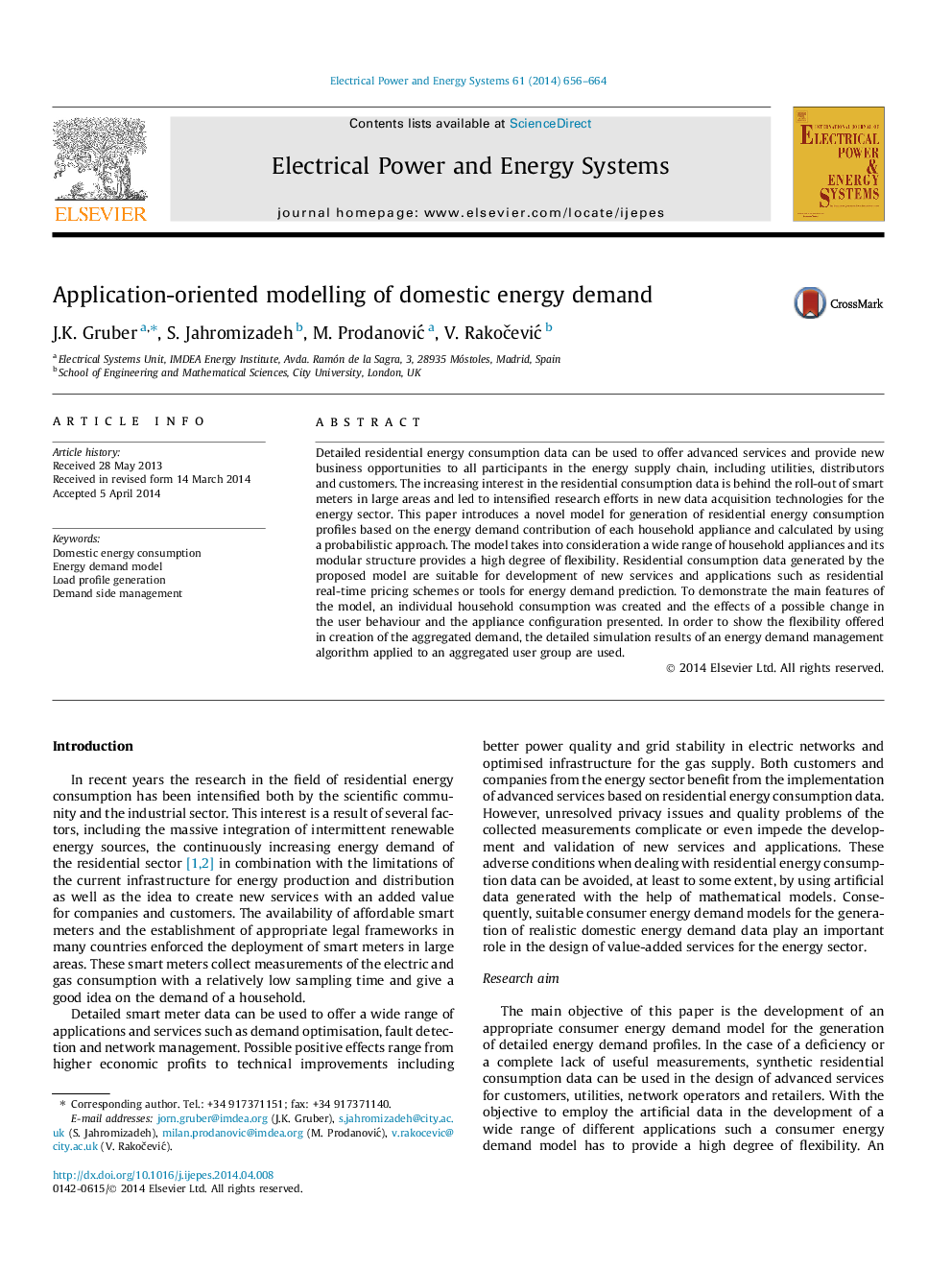| کد مقاله | کد نشریه | سال انتشار | مقاله انگلیسی | نسخه تمام متن |
|---|---|---|---|---|
| 6860401 | 1438739 | 2014 | 9 صفحه PDF | دانلود رایگان |
عنوان انگلیسی مقاله ISI
Application-oriented modelling of domestic energy demand
ترجمه فارسی عنوان
مدل سازی برنامه کاربردی تقاضای انرژی داخلی
دانلود مقاله + سفارش ترجمه
دانلود مقاله ISI انگلیسی
رایگان برای ایرانیان
کلمات کلیدی
مصرف انرژی داخلی، مدل تقاضای انرژی، بارگذاری مشخصات، مدیریت سمت تقاضا،
ترجمه چکیده
داده های تفصیلی مصرف انرژی مسکونی می توانند برای ارائه خدمات پیشرفته و ارائه فرصت های کسب و کار جدید به همه شرکت کنندگان در زنجیره تامین انرژی، از جمله آب و برق، توزیع کنندگان و مشتریان استفاده شود. علاقه افزایشی به داده های مصرفی مسکونی پس از گسترش مدارهای هوشمند در مناطق وسیعی است و منجر به تشدید تلاش های تحقیقاتی در زمینه تکنولوژی های جدید کسب اطلاعات در بخش انرژی شده است. این مقاله یک مدل جدید برای تولید پروفیل مصرف انرژی مسکونی بر اساس تقاضای انرژی هر دستگاه خانگی و یک روش احتمالاتی محاسبه می کند. این مدل طیف وسیعی از لوازم خانگی را در نظر می گیرد و ساختار مدولار آن سطح بالایی از انعطاف پذیری را فراهم می کند. داده های مصرف مسکن تولید شده توسط مدل پیشنهادی مناسب برای توسعه خدمات و برنامه های جدید مانند طرح های قیمت گذاری مسکن در زمان واقعی یا ابزار پیش بینی تقاضای انرژی هستند. برای نشان دادن ویژگی های اصلی مدل، مصرف خانوار فردی ایجاد شد و اثرات تغییر احتمالی رفتار کاربر و پیکربندی دستگاه مطرح شد. به منظور نشان دادن انعطاف پذیری ارائه شده در ایجاد تقاضای جمع، نتایج شبیه سازی دقیق الگوریتم مدیریت تقاضای انرژی اعمال شده به یک گروه کاربر جمع آوری شده مورد استفاده قرار می گیرد.
موضوعات مرتبط
مهندسی و علوم پایه
مهندسی کامپیوتر
هوش مصنوعی
چکیده انگلیسی
Detailed residential energy consumption data can be used to offer advanced services and provide new business opportunities to all participants in the energy supply chain, including utilities, distributors and customers. The increasing interest in the residential consumption data is behind the roll-out of smart meters in large areas and led to intensified research efforts in new data acquisition technologies for the energy sector. This paper introduces a novel model for generation of residential energy consumption profiles based on the energy demand contribution of each household appliance and calculated by using a probabilistic approach. The model takes into consideration a wide range of household appliances and its modular structure provides a high degree of flexibility. Residential consumption data generated by the proposed model are suitable for development of new services and applications such as residential real-time pricing schemes or tools for energy demand prediction. To demonstrate the main features of the model, an individual household consumption was created and the effects of a possible change in the user behaviour and the appliance configuration presented. In order to show the flexibility offered in creation of the aggregated demand, the detailed simulation results of an energy demand management algorithm applied to an aggregated user group are used.
ناشر
Database: Elsevier - ScienceDirect (ساینس دایرکت)
Journal: International Journal of Electrical Power & Energy Systems - Volume 61, October 2014, Pages 656-664
Journal: International Journal of Electrical Power & Energy Systems - Volume 61, October 2014, Pages 656-664
نویسندگان
J.K. Gruber, S. Jahromizadeh, M. ProdanoviÄ, V. RakoÄeviÄ,
